Causes, Symptoms, and Treatment
Shoulder impingement syndrome, also known as subacromial impingement, is a painful shoulder condition marked by restricted movement and inflammation.
In this article, we’ll cover the causes and symptoms of impingement syndrome as well as various treatment options. In addition to practical exercises that you can easily do at home without much equipment, we’ll also provide prevention tips.
Disclaimer: This article does not constitute medical advice and cannot replace it.

What is Shoulder Impingement Syndrome?
Shoulder impingement syndrome is a condition in which the soft tissue structures between the shoulder roof (acromion) and the head of the upper arm become narrowed. This narrowing can reduce the subacromial space – the area between the shoulder roof and the upper arm head – causing irritation or even inflammation in the shoulder's bursa. Those affected usually experience pain at rest, during activity, or with shoulder pressure.
The syndrome may also cause the tendons around the shoulder roof to wear down. Pain can also arise from the compression of tendons or soft tissues, like muscle fibers. Another contributing factor is poor alignment of the upper arm head in the shoulder socket, which increases the risk of tendon rupture (tendinosis) or rotator cuff tears.
Symptoms
Impingement syndrome often presents with sudden shoulder joint pain, especially when the arm is raised laterally above the head. An acute shoulder impingement syndrome can, however, cause other issues beyond pain during shoulder abduction. Affected individuals frequently report nighttime pain and discomfort in the shoulder or pain while driving, often due to the shoulder’s position while steering.
People who frequently perform overhead movements in their job or sports activities are more prone to shoulder pain. Without proper treatment or rest, an existing impingement syndrome can lead to a "frozen shoulder," a condition marked by progressively limited mobility over time.
Diagnosis
When diagnosing impingement syndrome, the "Painful Arc" test is often used. The "Painful Arc" refers to the angle range in which sudden joint pain occurs, typically between 60 and 120 degrees during arm abduction.
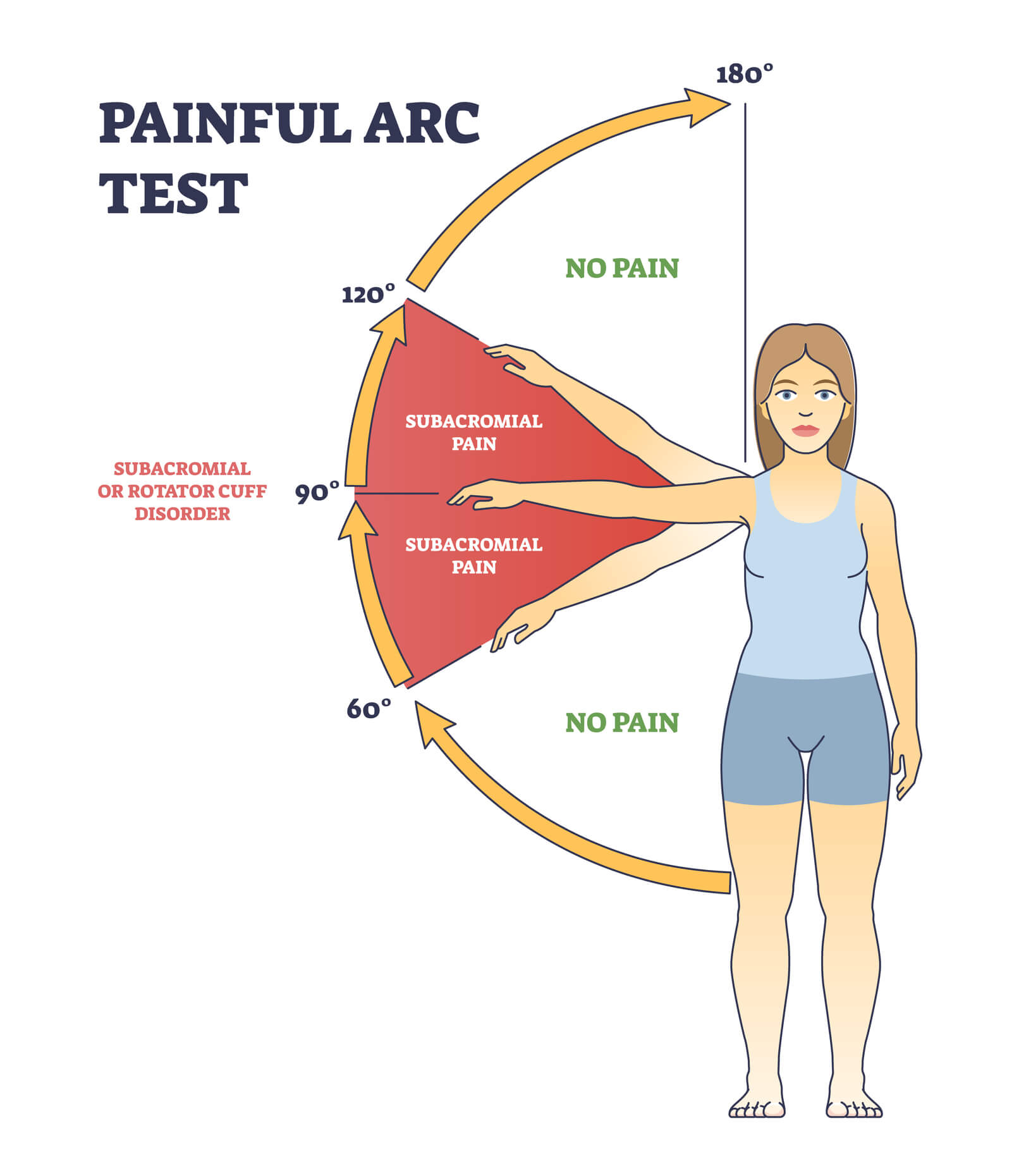
A more comprehensive diagnosis can be provided by ultrasound, MRI, and traditional X-rays. Bone changes, calcium deposits, and the shape and position of the shoulder joint are best viewed and interpreted through X-rays, while MRI or ultrasound is more suited for detecting rotator cuff injuries, joint bleeding, and inflammation or irritation. Additionally, various movement tests, such as the Hawkins test, are available to diagnose impingement syndrome.
The Hawkins-Test
To check if you have impingement syndrome, you can perform the Hawkins test with the help of another person.
- Start by keeping your arm in a neutral position.
- The helper grasps your elbow and wrist, lifting your arm forward to a 90-degree angle. In this position, they bend your elbow at a 90-degree angle towards your body.
- Then, your upright forearm is moved as horizontally as possible, creating a passive rotational movement in the shoulder joint.
If you feel pain during these movements, this may indicate impingement syndrome, and it should be examined by a doctor.
Treatment
The sooner impingement syndrome is detected, the sooner treatment can begin. Early diagnosis and prompt treatment increase your chances of a straightforward and speedy recovery. An untreated impingement syndrome can, in the worst case, lead to tears in the rotator cuff and related muscle inactivity.
With targeted functional training of the rotator cuff and muscles that stabilize the shoulder blade, such as the rhomboid muscles, it’s possible to reduce subacromial space constriction and ease bursa inflammation.
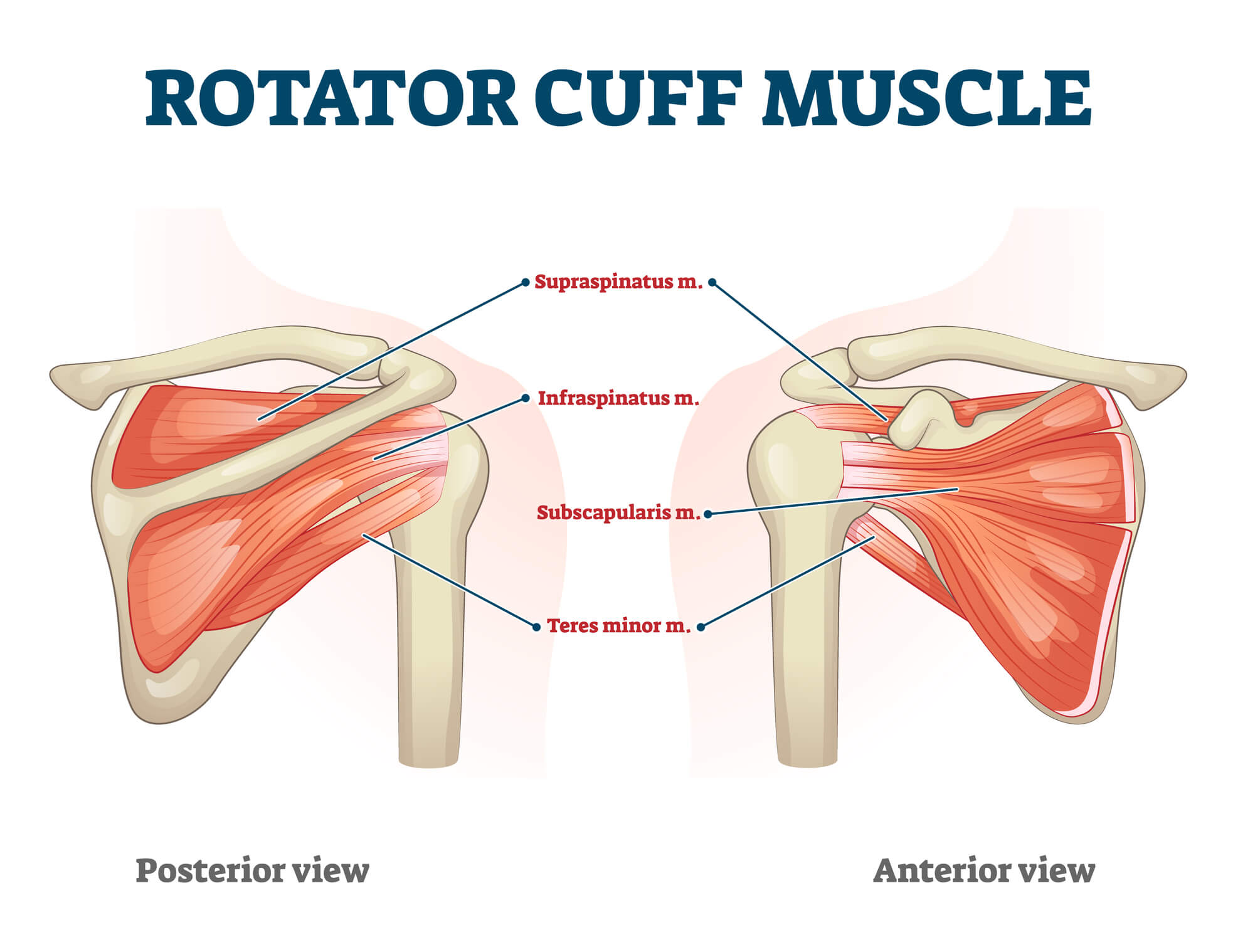
Strengthening the muscles helps reposition and stabilize the upper arm head in the shoulder socket. Other treatment options include injections, medications, acupuncture, or homeopathic methods. Often, multiple treatments are used simultaneously.
In most cases, medication is combined with functional training therapy, which is particularly important to avoid training in the pain zone. If impingement syndrome does not resolve with these measures, arthroscopic surgery may be considered as a last resort.
3 EXERCISES FOR HOME OR THE GYM
There are many exercises you can do at home or at the gym with minimal equipment. Here are three classic exercises. You don’t need much resistance as the main goal is to train the joint-supporting stabilizing muscles. All exercises are functional and require no more than a medium-strength resistance or TheraBand. Generally, anyone can do these exercises. However, if you currently have shoulder or elbow pain, we recommend consulting your doctor first.
EXERCISE 1: SHOULDER EXTERNAL ROTATION
External shoulder rotation targets part of the rotator cuff, particularly the infraspinatus and teres minor muscles, as well as the rear deltoid muscle.

Attach the band at elbow height to a stable point. Stand sideways to the band and hold the end with the hand farther from the band. Bend your elbow so that your upper and lower arm form a 90-degree angle. Keep your elbow close to your body throughout the exercise. Maintain slight tension in your core and glutes and keep your body upright.
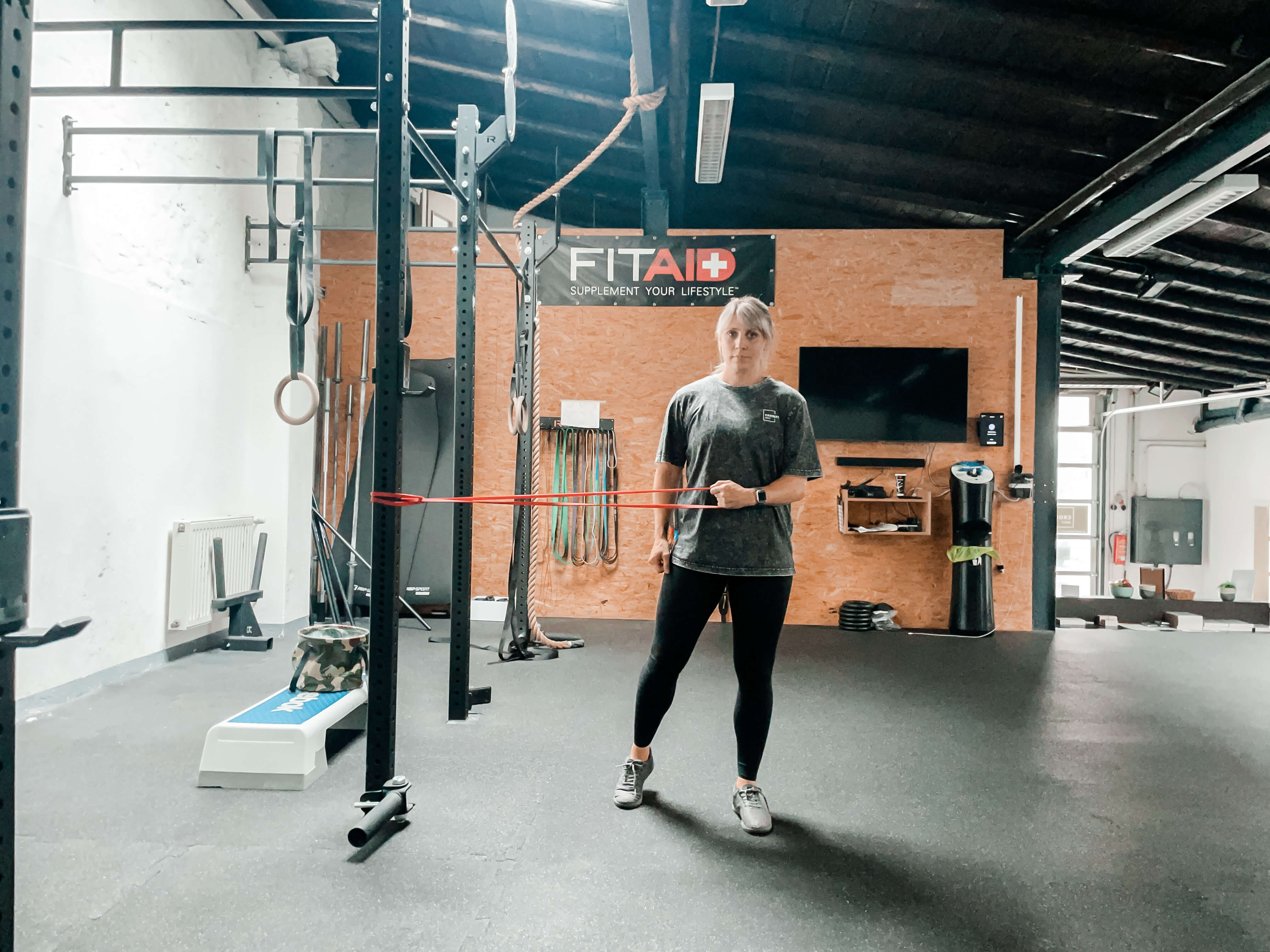
To perform the exercise, rotate your arm outward without losing contact between your elbow and body. You can use a towel between your elbow and body to make this easier. The intensity can be adjusted by stepping further from the band, increasing resistance.
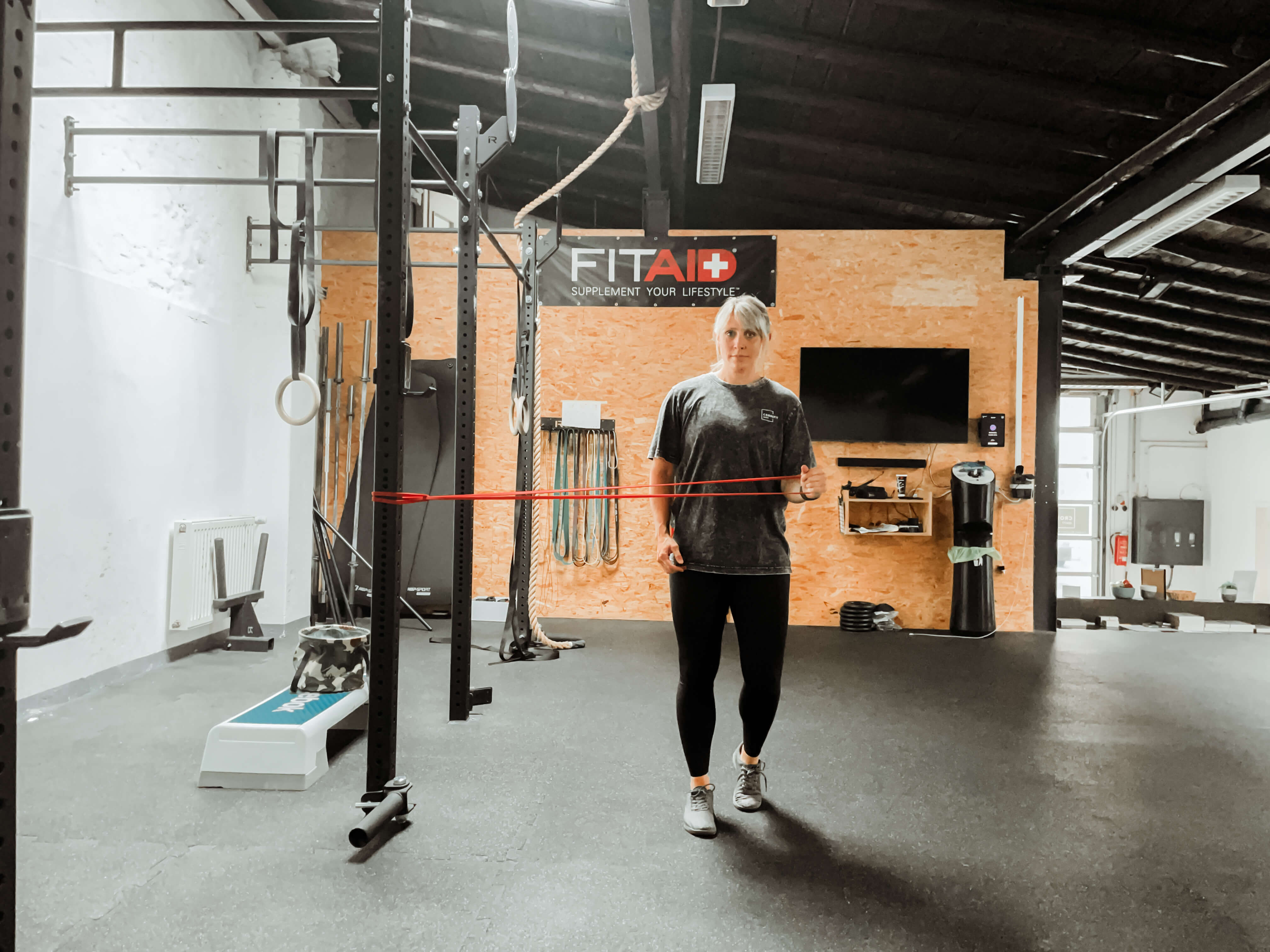
Watch a demo.
EXERCISE 2: SHOULDER INTERNAL ROTATION
Shoulder internal rotation also strengthens the rotator cuff, especially the subscapularis muscle, along with the front deltoid.
Fix the band at elbow height to a stable point. Stand sideways to the band and hold the end with the hand closer to the band.
Bend your elbow to a 90-degree angle, keeping it close to your body throughout the exercise.
Maintain slight tension in your core and glutes and a straight posture.
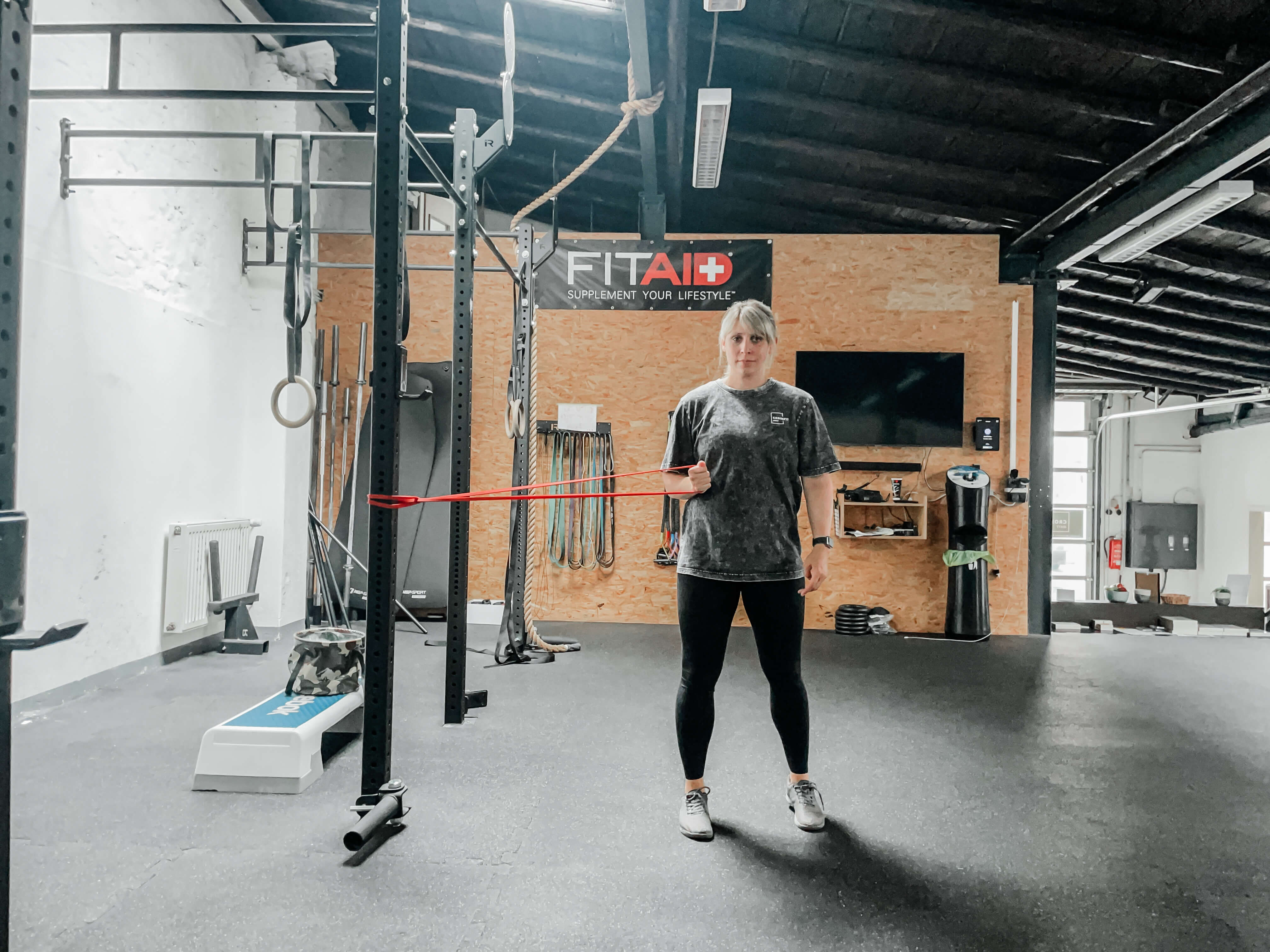
Perform the exercise by rotating your arm inward, keeping elbow contact with your body. Internal rotation typically allows for greater resistance, so step slightly further from the band for effectiveness.
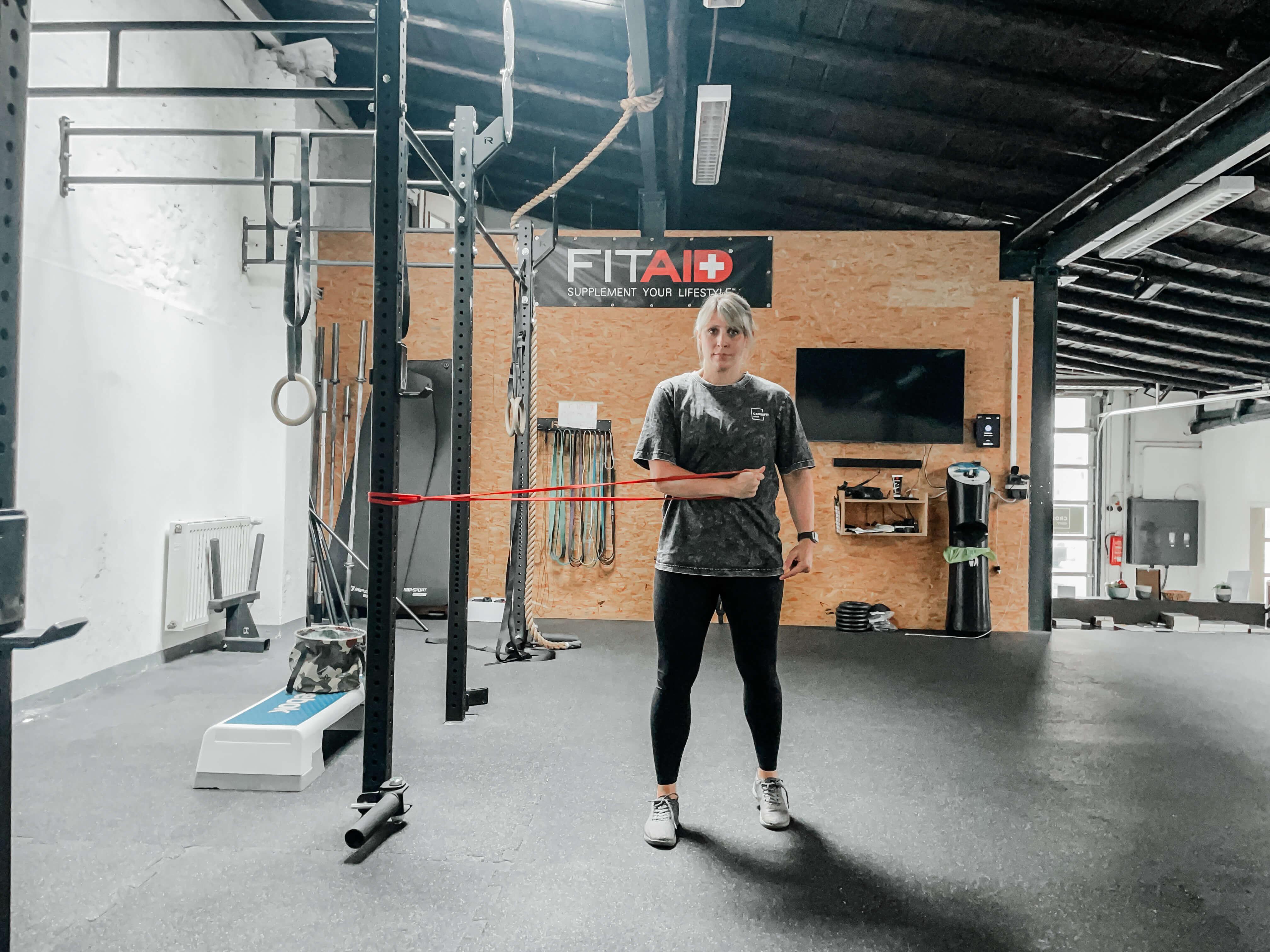
Watch a demo.
EXERCISE 3: MODIFIED PLANK
The modified plank improves shoulder blade mobility and strengthens associated muscles, primarily the rhomboid muscles. This exercise also strengthens the serratus anterior muscle and your core.
Start on all fours, with your hands directly under your shoulders and knees at hip level. Distribute your weight evenly on your hands and toes.
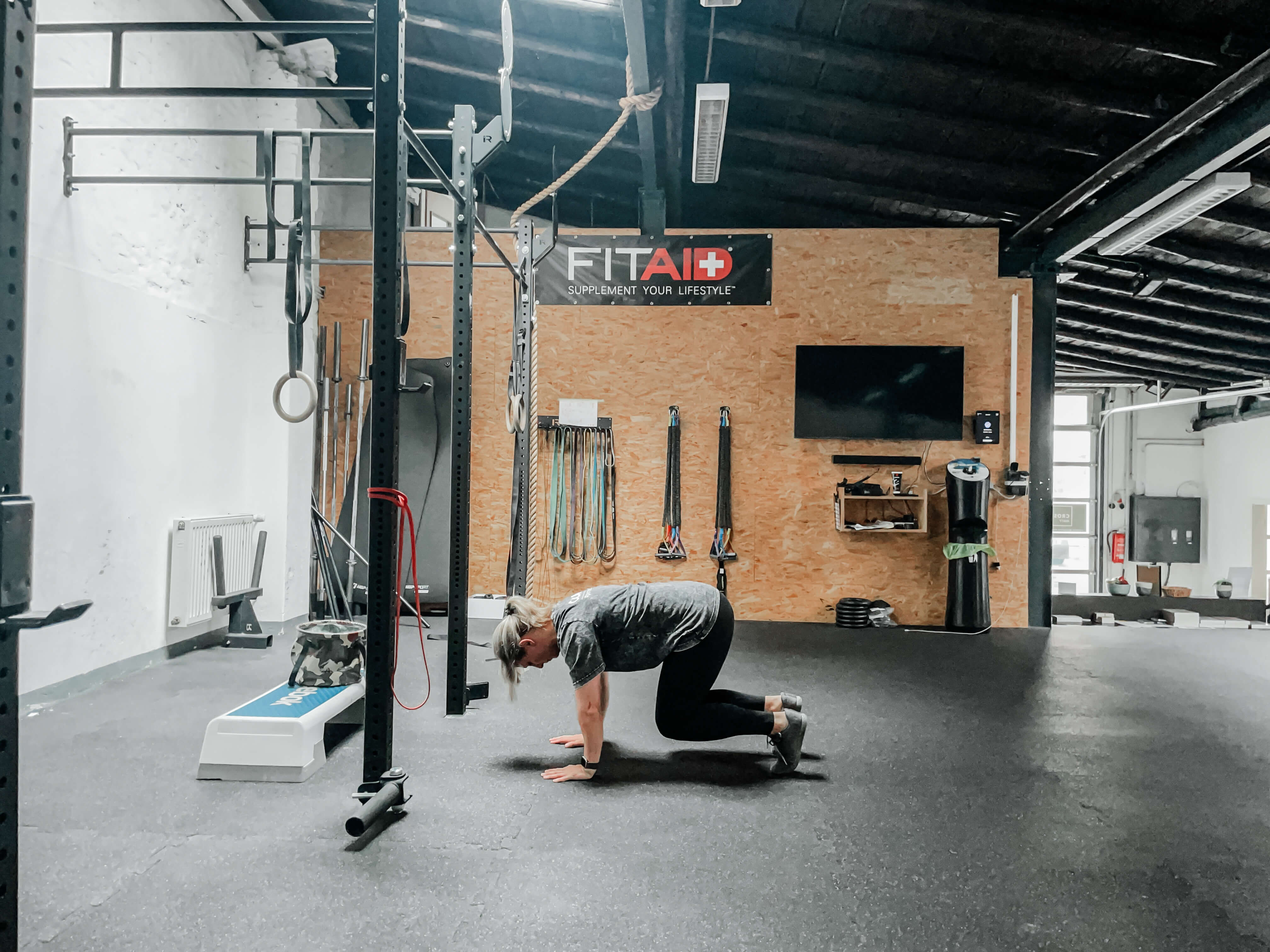
Lift your knees a few centimeters off the ground. Your weight is now evenly on your hands and toes. Keep your core tight and back straight.
Push your shoulder blades outward and downward, creating a slight hunch. Hold briefly before returning to a straight-back position.
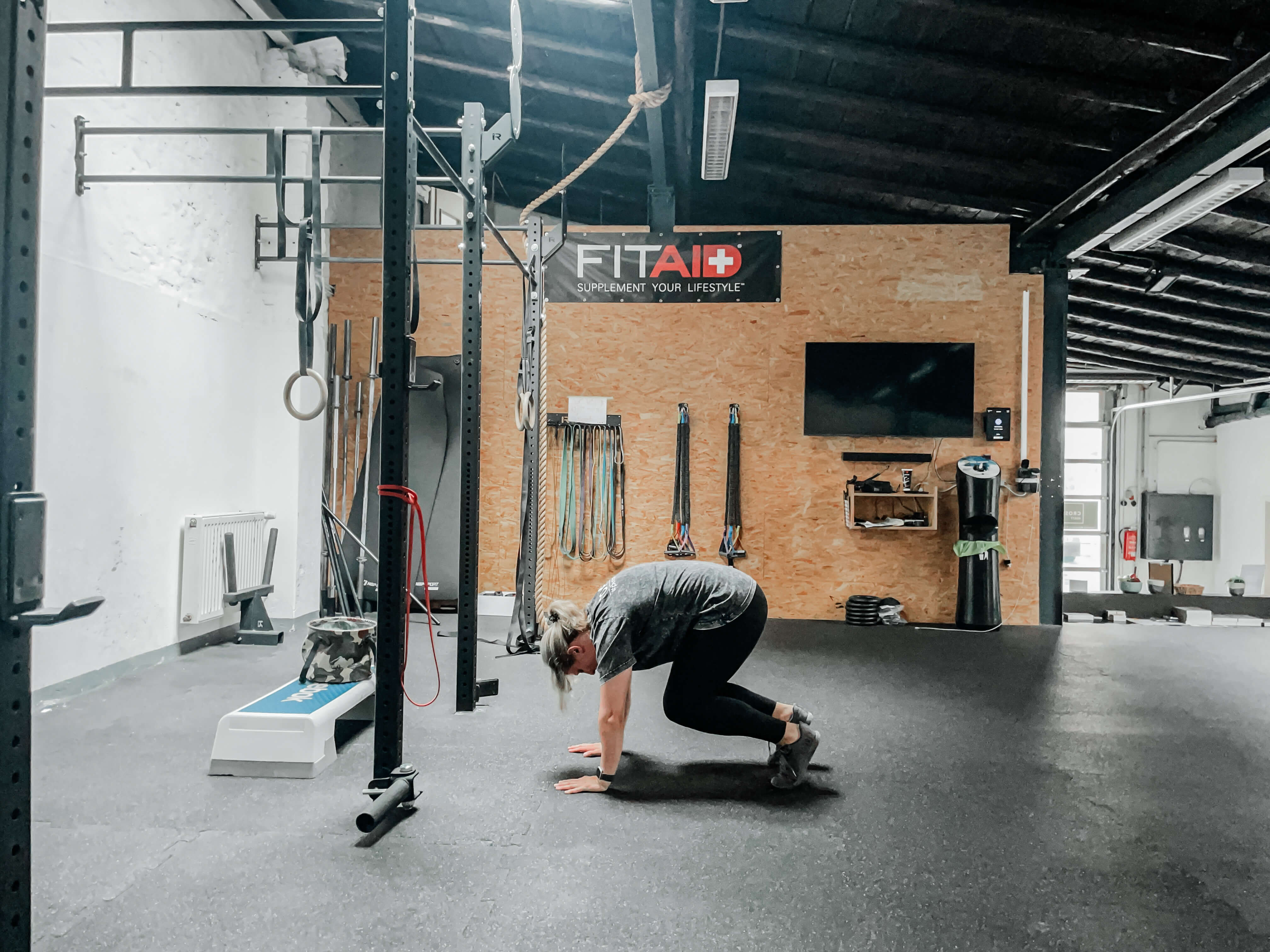
You should repeat all shoulder exercises 15-20 times (endurance strength training) and complete two to three sets, 2-3 times per week (every other day) for noticeable improvement over time.
Acute Impingement Syndrome: What to Do?
If even slight movements in your shoulder cause pain over time, you should consult an orthopedic specialist.
In daily life, avoid overhead movements as much as possible to prevent further soft tissue compression, avoid abrupt movements like catching objects suddenly, and relax your neck by, for example, pulling your shoulders back and down.
7 Tips for Avoiding Shoulder Pain
With a few simple exercises and behavior adjustments, you can actively reduce the risk of impingement syndrome:
- Pay attention to your posture throughout the day – an upright posture relieves the shoulder joint.
- Move your shoulder joint regularly, like shoulder circles, to promote circulation and nutrient supply, supporting shoulder preservation and regeneration.
- Avoid one-sided shoulder strain, like during phone calls or carrying shopping bags. Switch hands frequently when on the phone and use a backpack for shopping.
- If you have a desk job, regularly stretch your chest muscles.
- Ensure a balanced workout between pulling (pull) and pushing (push) exercises.
- Incorporate rotator cuff training into your exercise routine.
- Before sports activities involving overhead movements, perform a shoulder warm-up.
Please contact us immediately if you experience joint pain. We will adjust the training according to your needs. In some cases, it’s not necessary to stop training entirely.
Need more tips and support? Our team of certified medical fitness trainers and sports massage therapists are here to help.
Appendix:
*The rotator cuff is a group of four muscles and their tendons surrounding and stabilizing the shoulder joint. These muscles and tendons connect the upper arm bone (humerus) to the shoulder blade (scapula) and allow us to rotate and lift the arm. The four rotator cuff muscles are:
- Supraspinatus: Helps lift the arm.
- Infraspinatus: Allows outward rotation of the arm.
- Teres minor: Also supports outward arm rotation.
- Subscapularis: Rotates the arm inward.
Together, these muscles enable a range of movements and contribute to shoulder joint stability.
- picture credits: VectorMine / iStock
- picture credits: Anut21ng / iStock


